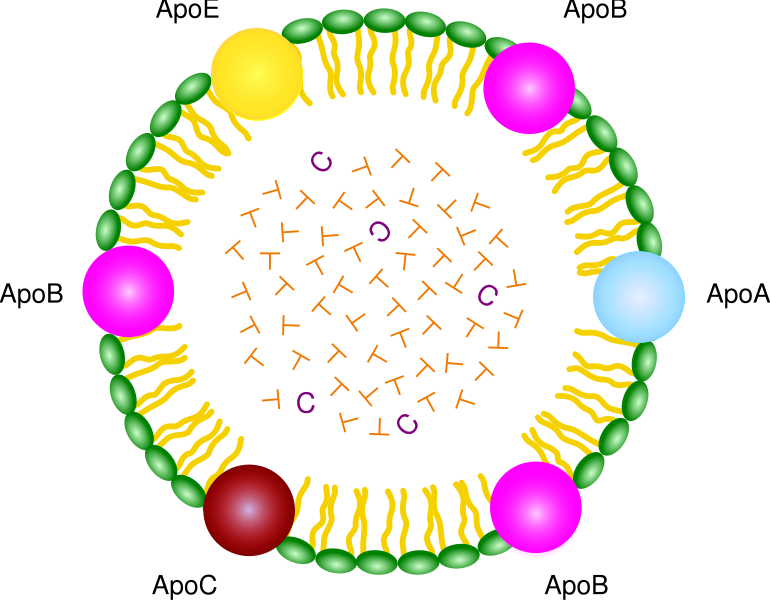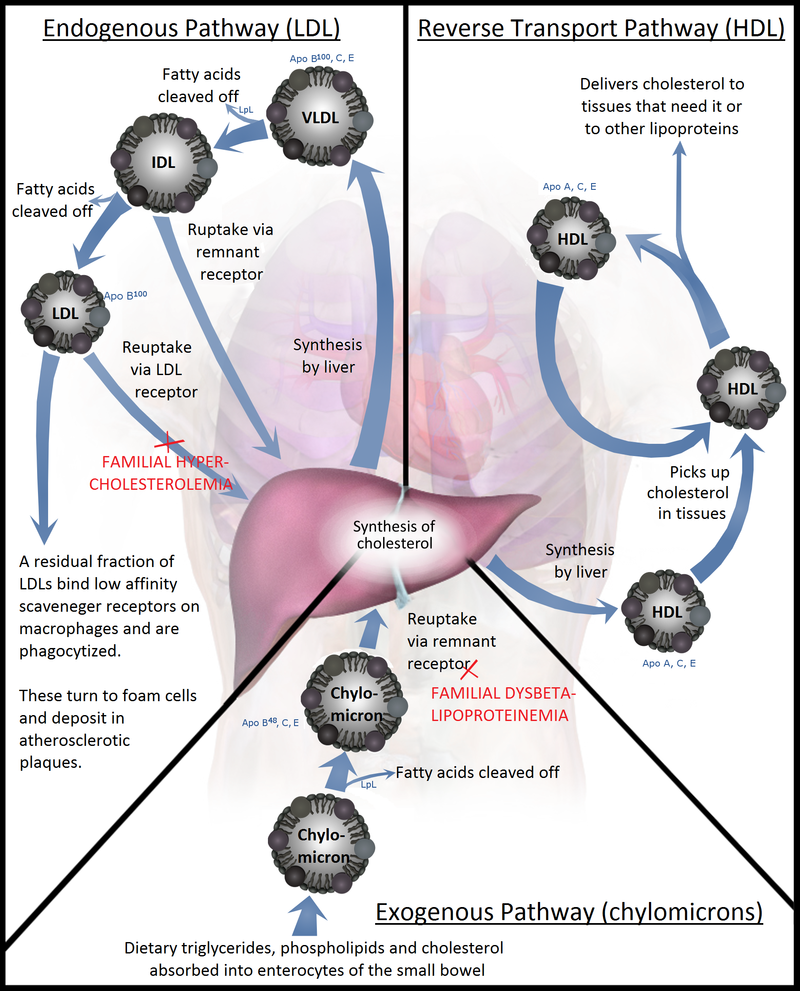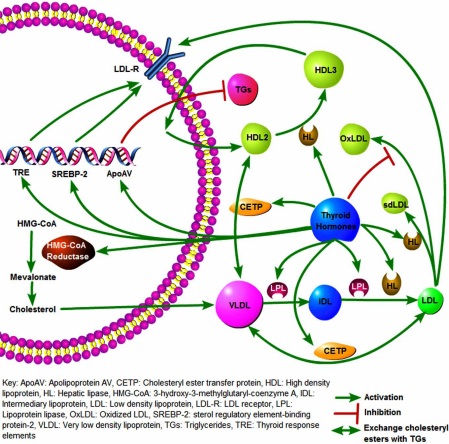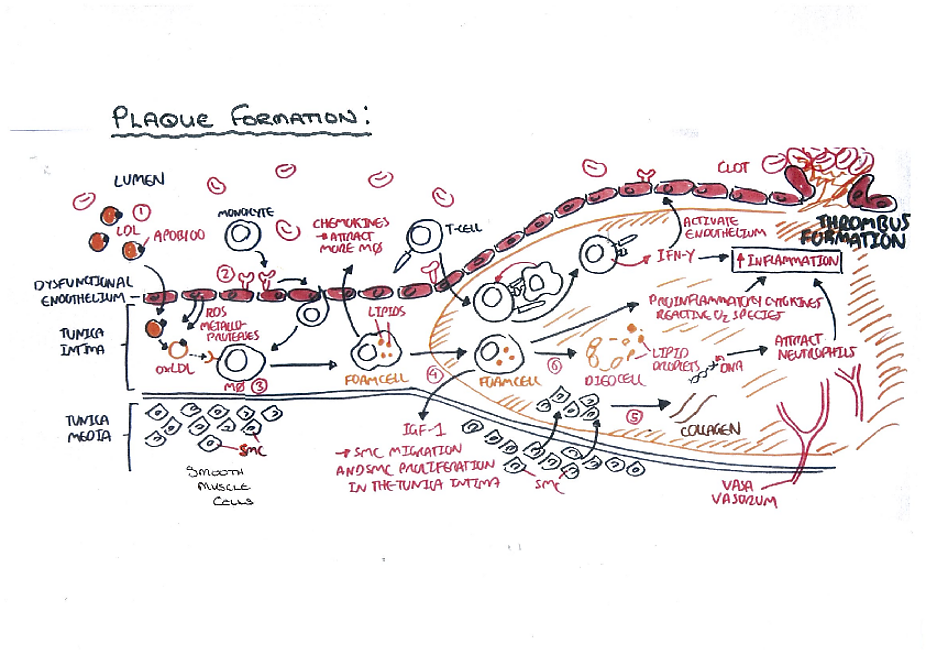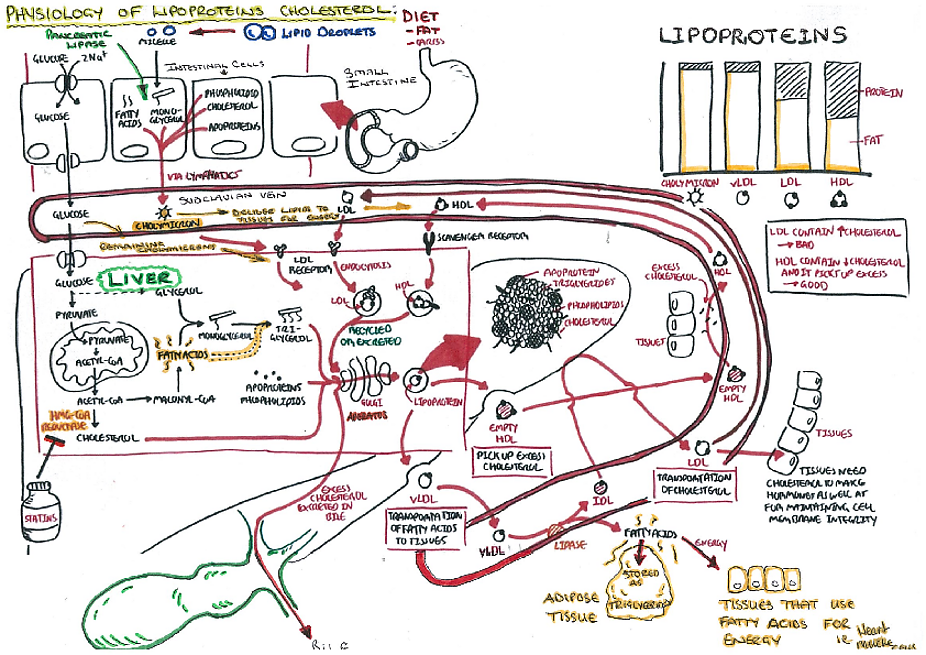Some interesting notes regarding Trans fats and Cholesterol:
1. Vegetable oils are more toxic when heated. One study reported that polyunsaturates turn to varnish in the intestines. A study by a plastic surgeon found that women who consumed mostly vegetable oils had far more wrinkles than those who used traditional animal fats. A 1994 study appearing in the Lancet showed that almost three quarters of the fat in artery clogs is unsaturated. The "artery clogging" fats are not animal fats but vegetable oils.
2. Trans fats, produced in vegetable oils when they are partially hydrogenated, The research group at the University of Maryland found that trans fatty acids not only alter enzymes that neutralize carcinogens, and increase enzymes that potentiate carcinogens..
3. Trans fats contribute to osteoporosis. Hanis, a Czechoslovakian researcher, found that trans consumption decreased testosterone, caused the production of abnormal sperm and altered gestation.
Trans consumption interferes with the body?s use of omega-3 fatty acids found in fish oils, grains and green vegetables, leading to impaired prostaglandin production. Some deep fried foods have been tested at almost 50% trans.
4. The scientific literature delineates a number of vital roles for dietary saturated fats, they enhance the immune system, are necessary for healthy bones, provide energy and structural integrity to the cells, protect the liver and enhance the body?s use of essential fatty acids.
5. Stearic acid, found in beef tallow and butter, has cholesterol lowering properties and is a preferred food for the heart. As saturated fats are stable, they do not become rancid easily, do not call upon the body?s reserves of antioxidants, do not initiate cancer, do not irritate the artery walls.
6. Your body makes saturated fats, and your body makes cholesterol about 2000 mg per day. In general, cholesterol that the average American absorbs from food amounts to about 100 mg per day. So, in theory, even reducing animal foods to zero will result in only a 5% decrease in the total amount of cholesterol available to the blood and tissues.
7. In practice, such a diet is likely to deprive the body of the substrates it needs to manufacture enough of this vital substance; for cholesterol, like saturated fats, stands unfairly accused.
8. It acts as a precursor to vital corticosteroids, hormones that help us deal with stress and protect the body against heart disease and cancer; and to the sex hormones like androgen, testosterone, estrogen and progesterone; it is a precursor to vitamin D, a very important fat-soluble vitamin needed for healthy bones and nervous system, proper growth, mineral metabolism, muscle tone, insulin production, reproduction and immune system function;
9. It is the precursor to bile salts, which are vital for digestion and assimilation of fats in the diet. Recent research shows that cholesterol acts as an antioxidant. This is the likely explanation for the fact that cholesterol levels go up with age.
10. As an antioxidant, cholesterol protects us against free radical damage that leads to heart disease and cancer. Cholesterol is the body?s repair substance, manufactured in large amounts when the arteries are irritated or weak.
11. Cholesterol is needed for proper function of serotonin receptors in the brain. Serotonin is the body's natural "feel-good" chemical. This explains why low cholesterol levels have been linked to aggressive and violent behaviour, depression and suicidal tendencies..
12. Mother's milk is especially rich in cholesterol and contains a special enzyme that helps the baby utilize this nutrient. Babies and children need cholesterol-rich foods throughout their growing years to ensure proper development of the brain and nervous system. Dietary cholesterol plays an important role in maintaining the health of the intestinal wall, which is why low-cholesterol vegetarian diets can lead to leaky gut syndrome and other intestinal disorders.
13. Animal foods containing saturated fat and cholesterol provide vital nutrients necessary for growth, energy and protection from degenerative disease. Like sex, animal fats are necessary for reproduction. Humans are drawn to both by powerful instincts. Suppression of natural appetites leads to weird nocturnal habits, fantasies, fetishes, bingeing and splurging.
B B Teter, et al, "Milk Fat Depression in C57B1/6J Mice Consuming Partially Hydrogenated Fat," Journal of Nutrition, 1990, 120:818-824; Barnard, et al, "Dietary Trans Fatty Acids Modulate Erythrocyte Membrane Fatty Acid
Composition and Insulin Binding in Monkeys," Journal of Nutritional Biochemistry, 1990, 1:190-195
T Hanis, et al, "Effects of Dietary Trans Fatty Acids on Reproductive Perforamnce of Wistar Rats," British Journal of Nutrition, 1989, 61:519-529
B Koletzko and J Muller, "Cis- and Trans-Isomeric Fatty Acids in Polasma Lipids of Newborn Infants and Their Mothers," Biology of the Neonate, 1990, 57:172-178
D Horrobin, "The Regulation of Prostaglandin Biosynthesis by Manipultion of Essential Fatty Acid Metabolism," Reviews in Pure and Applied Pharmacological Sciences, 1983, 4:339-383
G V Mann, "Metabolic Consequences of Dietary Trans Fatty Acids," The Lancet, 1994, 343:1268-1271
L Kohlmeier, et al, "Stores of Trans Fatty Acids and Breast Cancer Risk, "Am J Clin Nutr, 1995, 61:896;A25
R P Mensink and M Katan, "Effect of Dietary Trans Fatty Acids on High-Density and Low-Density Lipoprotein Cholesterol Levels in Healthy Subjects," N Eng J Med, 1990, 323:439-445
M G Enig, et al, "Isomeric Trans Fatty Acids in the U.S. Diet," J Am Coll Nutr, 1990, 9:471-486
W C Willett, et al, "Consumption of Trans-Fatty Acids in Relation to Risk of Coronary Heart Disease Among Women," Society for Epidemiology Research, June 1992, Annual Meeting, Abstract 249
W C Willett, et al, "Intake of Trans Fatty Acids and Risk of Coronary Heart Disease Among Women," Lancet, 1993, 341:581-585
J J Kabara, The Pharmacological Effects of Lipids, J J Kabara, ed, The American Oil Chemists? Society, Champaign, IL, 1978, 1-14; L A Cohen, et al, J Natl Cancer Inst, 1986, 77:43
B A Watkins, et al, "Importance of Vitamin E in Bone Formation and in Chrondrocyte Function" Purdue University, Lafayette, IN, AOCS Proceedings, 1996;
B A Watkins, and M F Seifert, "Food Lipids and Bone Health," Food Lipids and Health, R E McDonald and D B Min, eds, Marcel Dekker, Inc. New York, NY, p 101
J F Mead, et al, Lipids: Chemistry, Biochemistry and Nutrition, Plenum Press, 1986, New York
A A Nanji, et al, Gastroenterology, Aug 1995, 109(2):547-54; Y S Cha, and D S Sachan, J Am Coll Nutr, Aug 1994, 13(4):338-43
M L Garg, et al, The FASEB Journal, 1988, 2 4):A852; R M Oliart Ros, et al, Meeting Abstracts, AOCS Proceedings, May 1998, p 7, Chicago, IL
4):A852; R M Oliart Ros, et al, Meeting Abstracts, AOCS Proceedings, May 1998, p 7, Chicago, IL
L D Lawson and F Kummerow, "B-Oxidation of the Coenzyme A Esters of Vaccenic, Elaidic and Petroselaidic Acids by Rat Heart Mitochondria," Lipids, 1979, 14:501-503
E M Cranton and J P Frackelton, "Free Radical Pathology in Age-Associated Diseases: Treatment with EDTA Chelation, Nutrition and Antioxidants," Journal of Holistic Medicine, Spring/Summer 1984, pp 6-37
H Engelberg, "Low Serum Cholesterol and Suicide," Lancet, March 21, 1992, 339:727-728
R B Alfin-Slater, and L Aftergood, "Lipids," Modern Nutrition in Health and Disease, 6th ed, 1980, R S Goodhart and M E Shils, eds, Lea and Febiger, Philadelphia, p 134
M Gurr, "A FFresh Look at Dietary Recommendations," Inform, April 1996, 7:4:432-435
1. Vegetable oils are more toxic when heated. One study reported that polyunsaturates turn to varnish in the intestines. A study by a plastic surgeon found that women who consumed mostly vegetable oils had far more wrinkles than those who used traditional animal fats. A 1994 study appearing in the Lancet showed that almost three quarters of the fat in artery clogs is unsaturated. The "artery clogging" fats are not animal fats but vegetable oils.
2. Trans fats, produced in vegetable oils when they are partially hydrogenated, The research group at the University of Maryland found that trans fatty acids not only alter enzymes that neutralize carcinogens, and increase enzymes that potentiate carcinogens..
3. Trans fats contribute to osteoporosis. Hanis, a Czechoslovakian researcher, found that trans consumption decreased testosterone, caused the production of abnormal sperm and altered gestation.
Trans consumption interferes with the body?s use of omega-3 fatty acids found in fish oils, grains and green vegetables, leading to impaired prostaglandin production. Some deep fried foods have been tested at almost 50% trans.
4. The scientific literature delineates a number of vital roles for dietary saturated fats, they enhance the immune system, are necessary for healthy bones, provide energy and structural integrity to the cells, protect the liver and enhance the body?s use of essential fatty acids.
5. Stearic acid, found in beef tallow and butter, has cholesterol lowering properties and is a preferred food for the heart. As saturated fats are stable, they do not become rancid easily, do not call upon the body?s reserves of antioxidants, do not initiate cancer, do not irritate the artery walls.
6. Your body makes saturated fats, and your body makes cholesterol about 2000 mg per day. In general, cholesterol that the average American absorbs from food amounts to about 100 mg per day. So, in theory, even reducing animal foods to zero will result in only a 5% decrease in the total amount of cholesterol available to the blood and tissues.
7. In practice, such a diet is likely to deprive the body of the substrates it needs to manufacture enough of this vital substance; for cholesterol, like saturated fats, stands unfairly accused.
8. It acts as a precursor to vital corticosteroids, hormones that help us deal with stress and protect the body against heart disease and cancer; and to the sex hormones like androgen, testosterone, estrogen and progesterone; it is a precursor to vitamin D, a very important fat-soluble vitamin needed for healthy bones and nervous system, proper growth, mineral metabolism, muscle tone, insulin production, reproduction and immune system function;
9. It is the precursor to bile salts, which are vital for digestion and assimilation of fats in the diet. Recent research shows that cholesterol acts as an antioxidant. This is the likely explanation for the fact that cholesterol levels go up with age.
10. As an antioxidant, cholesterol protects us against free radical damage that leads to heart disease and cancer. Cholesterol is the body?s repair substance, manufactured in large amounts when the arteries are irritated or weak.
11. Cholesterol is needed for proper function of serotonin receptors in the brain. Serotonin is the body's natural "feel-good" chemical. This explains why low cholesterol levels have been linked to aggressive and violent behaviour, depression and suicidal tendencies..
12. Mother's milk is especially rich in cholesterol and contains a special enzyme that helps the baby utilize this nutrient. Babies and children need cholesterol-rich foods throughout their growing years to ensure proper development of the brain and nervous system. Dietary cholesterol plays an important role in maintaining the health of the intestinal wall, which is why low-cholesterol vegetarian diets can lead to leaky gut syndrome and other intestinal disorders.
13. Animal foods containing saturated fat and cholesterol provide vital nutrients necessary for growth, energy and protection from degenerative disease. Like sex, animal fats are necessary for reproduction. Humans are drawn to both by powerful instincts. Suppression of natural appetites leads to weird nocturnal habits, fantasies, fetishes, bingeing and splurging.
B B Teter, et al, "Milk Fat Depression in C57B1/6J Mice Consuming Partially Hydrogenated Fat," Journal of Nutrition, 1990, 120:818-824; Barnard, et al, "Dietary Trans Fatty Acids Modulate Erythrocyte Membrane Fatty Acid
Composition and Insulin Binding in Monkeys," Journal of Nutritional Biochemistry, 1990, 1:190-195
T Hanis, et al, "Effects of Dietary Trans Fatty Acids on Reproductive Perforamnce of Wistar Rats," British Journal of Nutrition, 1989, 61:519-529
B Koletzko and J Muller, "Cis- and Trans-Isomeric Fatty Acids in Polasma Lipids of Newborn Infants and Their Mothers," Biology of the Neonate, 1990, 57:172-178
D Horrobin, "The Regulation of Prostaglandin Biosynthesis by Manipultion of Essential Fatty Acid Metabolism," Reviews in Pure and Applied Pharmacological Sciences, 1983, 4:339-383
G V Mann, "Metabolic Consequences of Dietary Trans Fatty Acids," The Lancet, 1994, 343:1268-1271
L Kohlmeier, et al, "Stores of Trans Fatty Acids and Breast Cancer Risk, "Am J Clin Nutr, 1995, 61:896;A25
R P Mensink and M Katan, "Effect of Dietary Trans Fatty Acids on High-Density and Low-Density Lipoprotein Cholesterol Levels in Healthy Subjects," N Eng J Med, 1990, 323:439-445
M G Enig, et al, "Isomeric Trans Fatty Acids in the U.S. Diet," J Am Coll Nutr, 1990, 9:471-486
W C Willett, et al, "Consumption of Trans-Fatty Acids in Relation to Risk of Coronary Heart Disease Among Women," Society for Epidemiology Research, June 1992, Annual Meeting, Abstract 249
W C Willett, et al, "Intake of Trans Fatty Acids and Risk of Coronary Heart Disease Among Women," Lancet, 1993, 341:581-585
J J Kabara, The Pharmacological Effects of Lipids, J J Kabara, ed, The American Oil Chemists? Society, Champaign, IL, 1978, 1-14; L A Cohen, et al, J Natl Cancer Inst, 1986, 77:43
B A Watkins, et al, "Importance of Vitamin E in Bone Formation and in Chrondrocyte Function" Purdue University, Lafayette, IN, AOCS Proceedings, 1996;
B A Watkins, and M F Seifert, "Food Lipids and Bone Health," Food Lipids and Health, R E McDonald and D B Min, eds, Marcel Dekker, Inc. New York, NY, p 101
J F Mead, et al, Lipids: Chemistry, Biochemistry and Nutrition, Plenum Press, 1986, New York
A A Nanji, et al, Gastroenterology, Aug 1995, 109(2):547-54; Y S Cha, and D S Sachan, J Am Coll Nutr, Aug 1994, 13(4):338-43
M L Garg, et al, The FASEB Journal, 1988, 2
L D Lawson and F Kummerow, "B-Oxidation of the Coenzyme A Esters of Vaccenic, Elaidic and Petroselaidic Acids by Rat Heart Mitochondria," Lipids, 1979, 14:501-503
E M Cranton and J P Frackelton, "Free Radical Pathology in Age-Associated Diseases: Treatment with EDTA Chelation, Nutrition and Antioxidants," Journal of Holistic Medicine, Spring/Summer 1984, pp 6-37
H Engelberg, "Low Serum Cholesterol and Suicide," Lancet, March 21, 1992, 339:727-728
R B Alfin-Slater, and L Aftergood, "Lipids," Modern Nutrition in Health and Disease, 6th ed, 1980, R S Goodhart and M E Shils, eds, Lea and Febiger, Philadelphia, p 134
M Gurr, "A FFresh Look at Dietary Recommendations," Inform, April 1996, 7:4:432-435







